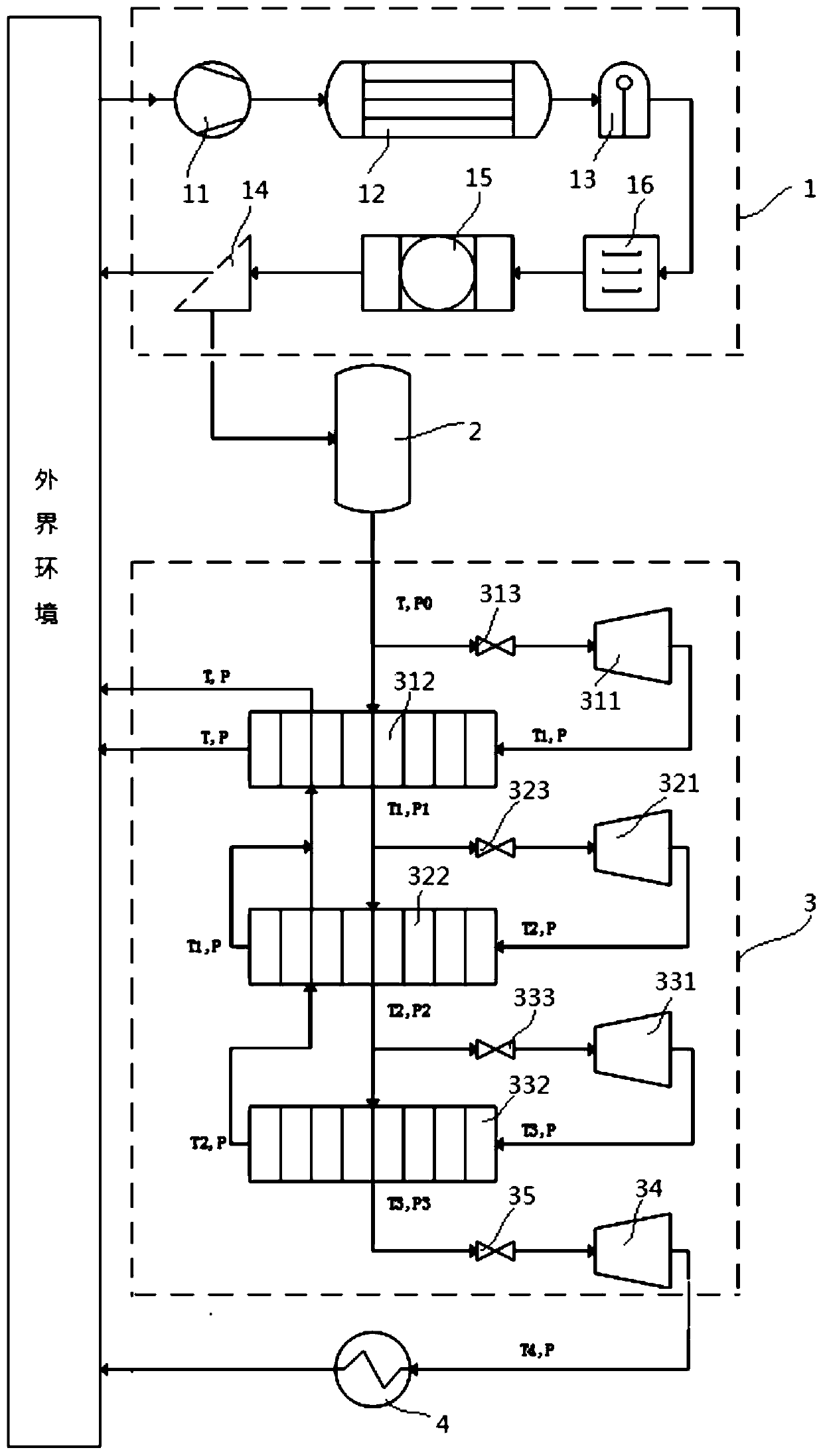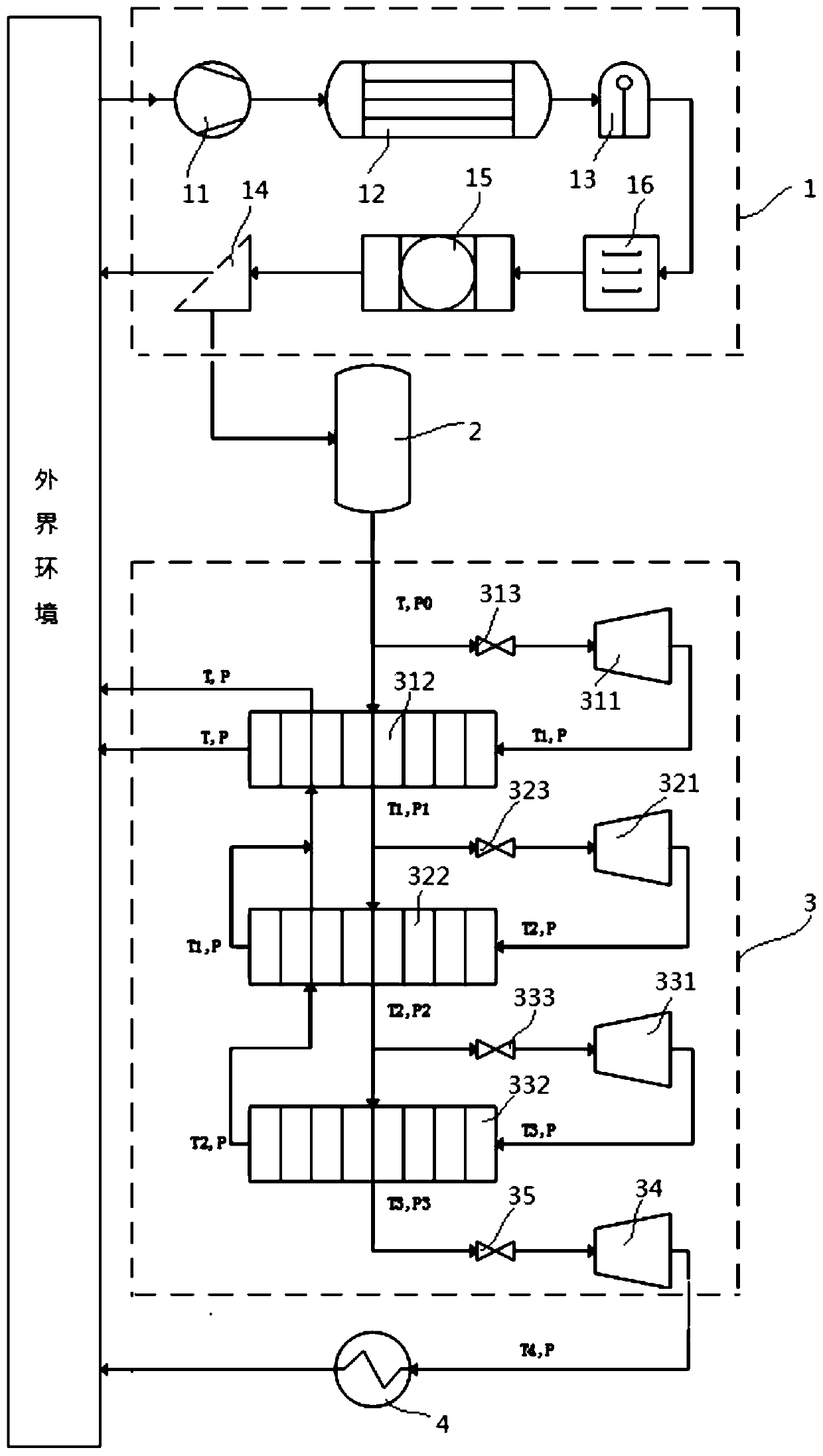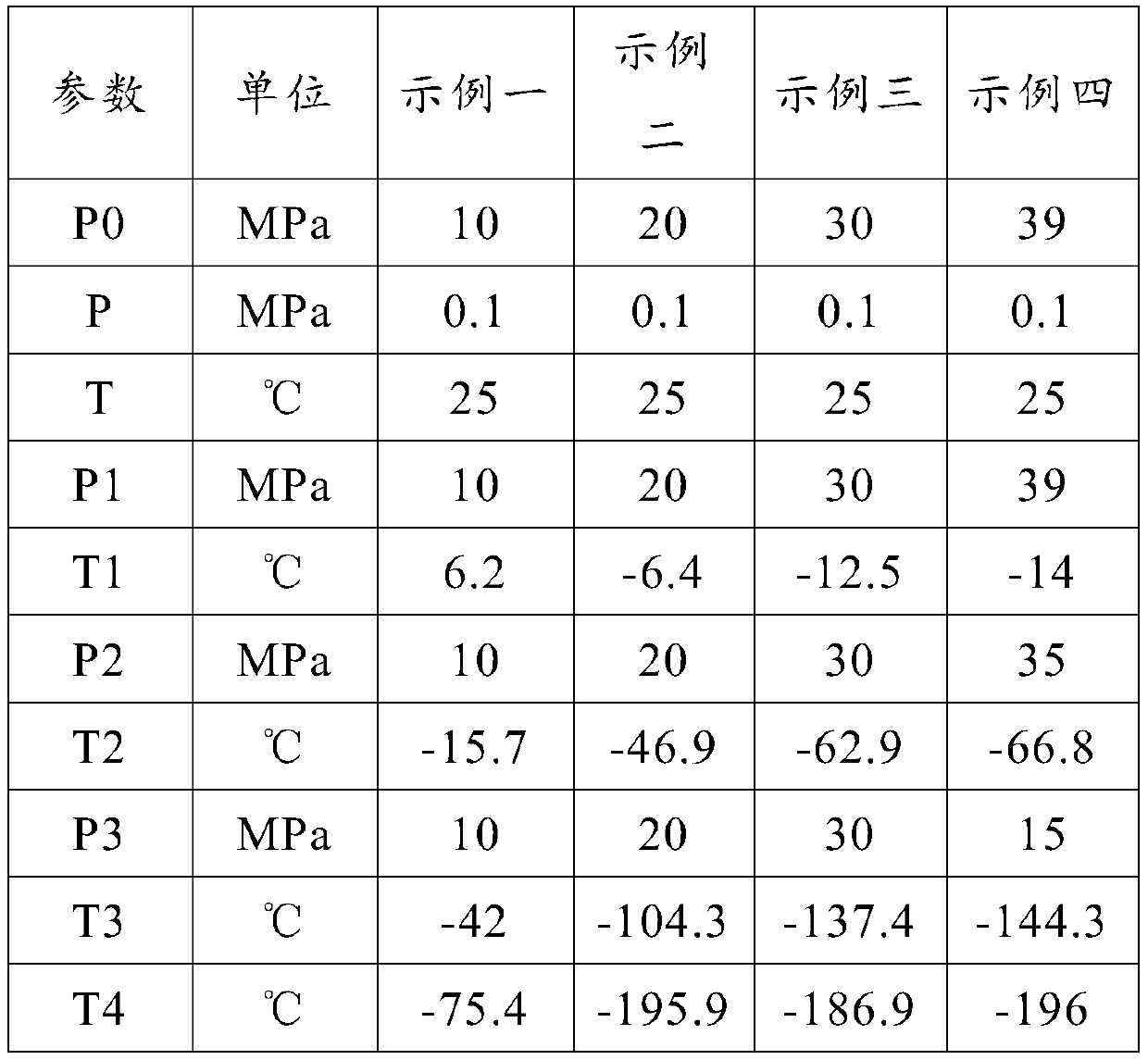Low-temperature cryotherapy equipment
A technology of treatment equipment and low-temperature freezing, which is applied in the directions of lighting and heating equipment, refrigeration and liquefaction, cooling surgical instruments, etc., can solve the problems of high transportation costs, restrictions on the promotion of low-temperature cryotherapy equipment, and high transportation requirements, so as to improve the popularity, Improving the level of social medical services and overcoming the effect of high transportation requirements
- Summary
- Abstract
- Description
- Claims
- Application Information
AI Technical Summary
Problems solved by technology
Method used
Image
Examples
Embodiment Construction
[0032] Aiming at the technical problem that the working medium in the low-temperature cryotherapy equipment in the prior art needs to be transported separately, which limits the application of the equipment, this paper conducts in-depth research and proposes a technical solution to the above technical problem.
[0033] In order to enable those skilled in the art to better understand the technical solutions of the present invention, the present invention will be further described in detail below in conjunction with the accompanying drawings and specific embodiments.
[0034] Please refer to figure 1 , figure 1 It is a schematic diagram of cryotherapy equipment in an embodiment of the present invention; the arrows in the figure indicate the flow direction of the working fluid.
[0035] The present invention provides a low-temperature cryotherapy device, which includes a treatment application body 4, which can be an ablation needle, or other similar medical working equipment tha...
PUM
 Login to View More
Login to View More Abstract
Description
Claims
Application Information
 Login to View More
Login to View More - Generate Ideas
- Intellectual Property
- Life Sciences
- Materials
- Tech Scout
- Unparalleled Data Quality
- Higher Quality Content
- 60% Fewer Hallucinations
Browse by: Latest US Patents, China's latest patents, Technical Efficacy Thesaurus, Application Domain, Technology Topic, Popular Technical Reports.
© 2025 PatSnap. All rights reserved.Legal|Privacy policy|Modern Slavery Act Transparency Statement|Sitemap|About US| Contact US: help@patsnap.com



